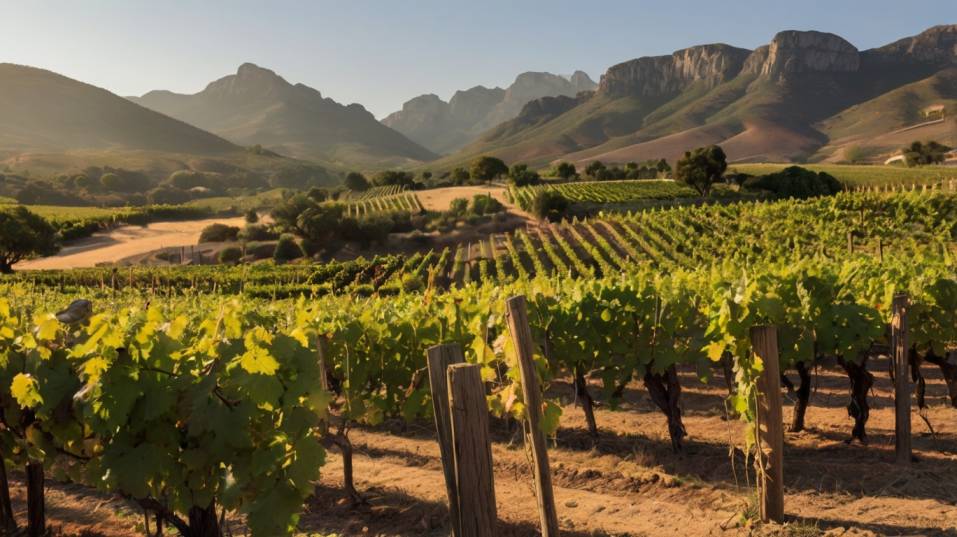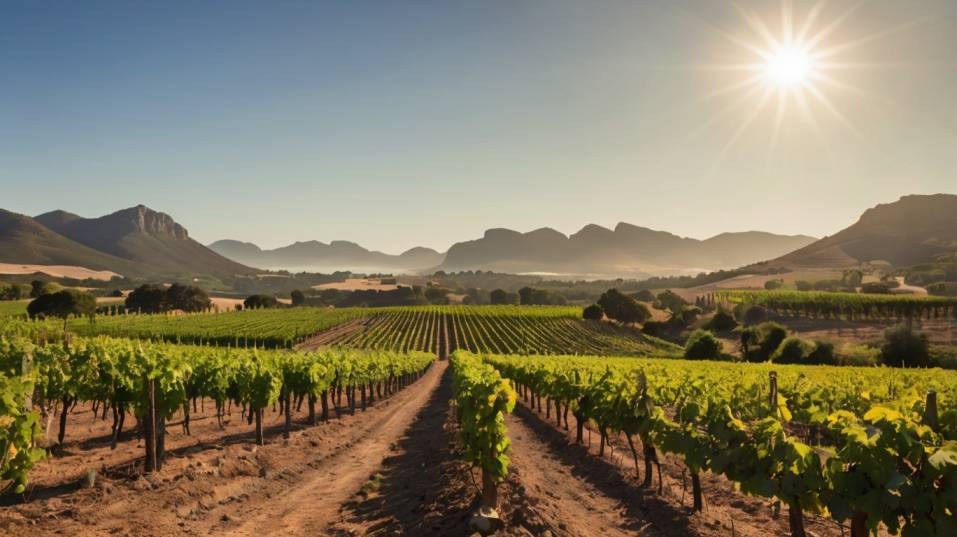South Africa’s Hidden Wine Gems
Discover South Africa’s most revealing wines—perfect for learning to taste with purpose, build a palate, and explore without pretense.

Why chase prestige when discovery tastes this good? South Africa offers wine that teaches as much as it thrills—especially for curious newcomers. These bottles aren’t about hype. They’re about place, structure, and story.
Whether you’re just starting your wine journey or building a serious palate, South Africa’s under-the-radar regions deliver clarity and confidence.
You don’t need a wine course. You need a glass that shows you something new—and these wines do exactly that.
Start with the Edges, Not the Center
Most wine maps put Stellenbosch front and center—and with good reason. But if you want to learn how to taste wine, not just drink it, you need to look beyond the big names.
The regions that challenge convention and stretch the boundaries of climate and soil are where wine becomes most revealing.
Cool Precision in Elgin
Take Elgin, perched high in the mountains southeast of Cape Town. Its cool-climate profile means longer ripening seasons, which results in wines that emphasize finesse over fruit.
A Chardonnay from Elgin isn’t loud. It whispers—lean citrus, a saline edge, restrained oak. If you want to understand the role of acid in a wine’s structure, this is where to start.
These wines teach you pacing: how to recognize length, balance, and precision on the palate, not just flavor.

Texture and Grit in Swartland
Then swing inland to Swartland, where heat, drought, and deep roots yield wines of grip and gravitas. Chenin Blanc here is serious. It’s not meant to be “easy.”
You’ll taste dry honey, crushed stone, even a whisper of lanolin or beeswax in older bottlings. Swartland Chenin helps you understand texture—a quality often overlooked by beginners but essential to judging wine quality.
When a white wine leaves a chalky imprint or firm edge after you swallow, you’re not just tasting; you’re feeling the wine.
Swartland: A School of Contrast
Swartland isn’t just about Chenin Blanc. It’s also a proving ground for how winemaking choices shape a wine. Grenache, Syrah, Mourvèdre—all thrive here.
But the real education comes when you compare producers using different methods. Some go for partial whole-bunch fermentation, giving the wine a peppery, herbal lift.
Others de-stem completely, coaxing out purity and polish. Tasting these side by side isn’t just fun—it’s a crash course in tannin management, aromatic complexity, and how fermentation techniques translate into sensory detail.
And the reds don’t always announce themselves with big structure or alcohol. Many are fresh, medium-bodied, and food-flexible. If you’re looking to learn how red wine can lift rather than weigh down a meal, this is the place.
Tulbagh and Hemel-en-Aarde: Case Studies in Place
Some regions teach you about wine by showing extremes. Others teach through contrast. Tulbagh and Hemel-en-Aarde do both.
They're not stylistically similar—but that’s exactly why they’re so valuable for understanding how site influences flavor, structure, and style. Tasting from both helps you see just how much a place can shape a bottle.
Power and Restraint in Tulbagh
Tulbagh is a bowl-shaped valley with dramatic temperature swings and varied soils. Its wines can be powerful but also incredibly defined.
Cabernet Sauvignon here leans more toward tobacco, graphite, and savory spice than jammy fruit.
This gives you a taste of restraint in a warm climate—a lesson that challenges assumptions about what “hot region” wines are supposed to taste like.
Grace and Precision in Hemel-en-Aarde
Now move south to Hemel-en-Aarde, close to the coast. The name means "Heaven and Earth," and its Pinot Noir and Chardonnay deliver on that tension.
You’ll find wines with crushed red fruit, chalky minerality, and a fine-boned structure that rewards slow sipping.
Here’s where you learn about precision and subtlety—qualities that build your palate in a quiet, confident way. You start noticing the difference between a wine that’s technically good and one that moves with grace.
Learn Wine by Tasting, Not by Theory
You don’t need a sommelier course to taste well. But you do need reference points—and South Africa offers some of the clearest.
Because the best wines here aren’t engineered for uniformity, they reflect vintage, soil, and winemaking in ways you can actually detect. That’s what makes them so educational.
For example, compare a Chenin Blanc aged in stainless steel to one fermented in large, neutral oak. You’ll pick up on how texture, roundness, and aromatic complexity shift without being told.
A carbonic Cinsault might show strawberry gum and bubblegum aromatics, while a traditional ferment reveals earthy, spicy, savory layers. These are tangible, teachable differences that hone your instincts and expand your vocabulary.
The key is to stop asking whether a wine is “good” and start asking what it shows. What’s the acid doing? How do the tannins feel—silky, grainy, sticky, absent? Does the wine tell you about where it’s from, or just where it was made?
South African wines often answer these questions more directly than better-known counterparts. That clarity—combined with the diversity of styles—is what makes them such effective tools for learning.
Style Without Status
One of the most freeing aspects of South Africa’s wine scene is that it doesn’t revolve around status. You won’t find a lot of cult labels or inflated egos.
What you will find are small producers experimenting with honest, site-specific winemaking—natural yeast ferments, minimal oak, native varietals. They’re not following fashion; they’re following the land.
That attitude invites you to explore without posturing. It also means you can afford to taste widely, revisit favorites, and track how your own preferences evolve.
Some wines might feel rustic or unresolved. That’s part of the process. Not every bottle needs to be a revelation. What matters is that you’re learning to taste with intention—and starting to trust your own judgment.
Final Thoughts
If you want to sharpen your palate and deepen your wine knowledge, South Africa is an ideal place to begin. Not because it’s trendy, but because it’s honest.
The wines come with character, contrast, and clarity—three things that help you grow as a taster. They’re also remarkably good value, which means you can explore more styles, more regions, and more techniques without hesitation.
So don’t reach for the usual bottle next time. Pick up a Swartland Chenin with a bit of age. Try a Pinot from Hemel-en-Aarde or a skin-contact white from the Cape South Coast.
Taste slowly. Pay attention. Let the wine tell you something. And more importantly—let it change the way you taste everything that follows.




